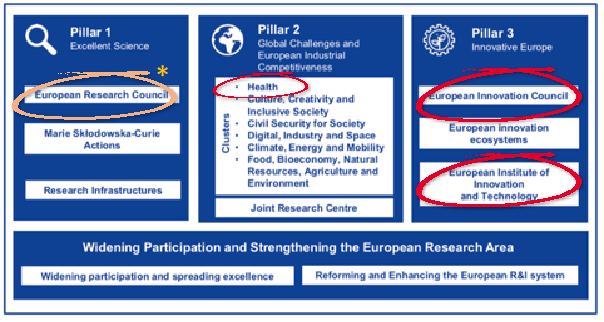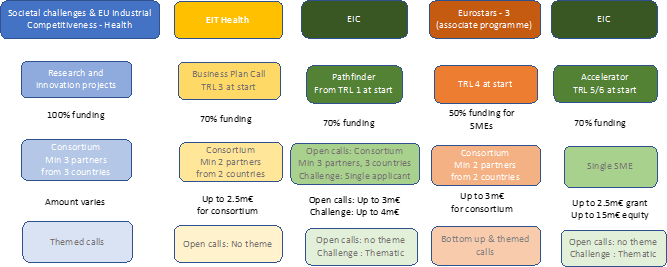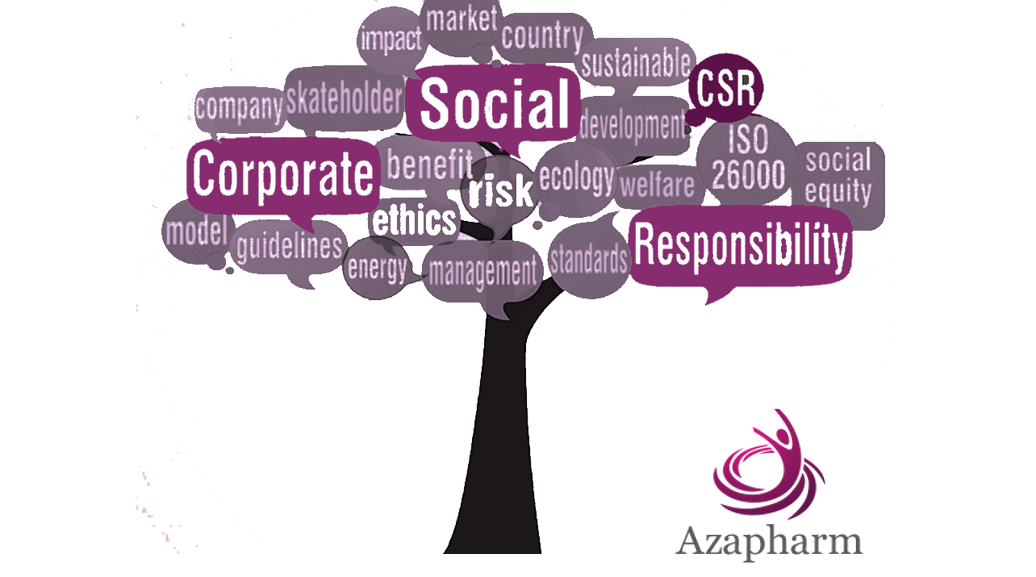
Your EU Innovation Funding Strategy – what you need to know
By: Katherine Wong-Selz
Overview of the Horizon Europe Programme
At the beginning of April, the European Commission launched the first calls for the Horizon Europe programme. Between now and 2027, it will provide nearly 100 billion € in research and innovation project funding to boost Europe’s research excellence and transform the fruits of that excellence into world beating companies.
As with previous programmes, there is a strong emphasis on healthcare, providing numerous funding opportunities for researchers and SMEs, whether to advance promising candidates in drugs and medical devices or to improve healthcare systems.
Here we outline why you need to be strategic in your approach to EU funding and then we give you a few examples of these funding opportunities.
The EIC Single-track mind of entrepreneurs
When we first discuss non-dilutive funding options with our clients, we usually observe a singular focus on the European Innovation Council’s (EIC) Accelerator Open calls, where any subject of innovation may be submitted for funding.
Companies have flocked to this instrument because they can apply individually instead having the complication of finding their way into a consortium of partners from at least 3 countries.
Moreover, the funding available is very attractive – 2.5m€ in non-dilutive grant money plus 15m€ in equity. The competition for this funding has become so intense that for the last call in October 2020 over 4000 applications were made for barely 40 approved dossiers.
Broaden your Horizons (Europe)
Yet companies are missing many of the other Horizon Europe opportunities. Instead of applying repeatedly to the same EIC Accelerator Open call every time, you should develop an organised Horizon Europe funding strategy for your company.
How to start:
You should identify and respond to the calls put out by the different parts of Horizon Europe that have the best fit with your innovation and its stage of development. The advantages of such a multi-stage application strategy are three-fold:
1) greatly improved chances of funding success (because the other calls attract far less competition);
2) get your product/service funded over the different stages of its development and
3) it’s an opportunity to build your European ecosystem of stakeholders – the researchers, hospitals, payers, distributors, pharma, etc. – that your company must build in any case to get your product or service to market.
Get to know the programme
The key to such a strategy is understanding the structure of the Horizon Europe programme. Trying to find appropriate Horizon Europe calls by simply going to the portal is doomed from the start.
Horizon Europe is organised in 3 parts, called “pillars” (a fourth, transversal part that consists of actions, rather than grants is aimed at improving Europe’s research and innovation ecosystem). Each of the three pillars offers great funding opportunities in healthcare, which we’ve highlighted in the diagram below.
Another key is to watch out for opportunistic calls that can be launched in response to European policy changes (e.g. the green calls) and events (e.g. the COVID-19 calls). In addition, there are transnational calls such as the Important Projects of Common European Interest (IPCEI) call for Healthcare, which was launched in March 2021.
 * The European Research Council’s “Proof of Concept Grant” to determine commercial/societal potential of ERC-funded research is under revision in 2021.
* The European Research Council’s “Proof of Concept Grant” to determine commercial/societal potential of ERC-funded research is under revision in 2021.Learn from others – a couple of case studies
Several smart companies have successfully developed their innovations with funding from different pillars. Here are 2 good examples that we found in the EU’s grant database of companies that were able to advance their development with the help of diverse European grants.
TheraPanacea initially obtained a grant of 150 000€ from the European Research Council (ERC) in 2017 that drew on its founder’s previously ERC-funded research. His aim was to prove that his AI-driven solutions could greatly improve the current semi-automatic but time-consuming process of complex radiotherapy treatment planning of cancer patients. In 2019 TheraPanacea launched its first-mover product, Annotate, which can contour an organ in minutes vs the hours that existing systems take. Today it is used for 1 in 6 radiotherapy patients in France, with traction rising both in France and internationally. This grant was followed up with an SME Instrument grant of 2.4m€ in 2019 to allow the company to build its most ambitious solution yet: fully AI-automated treatment planning software for an MRI-guided radiotherapy procedure. If TheraPanacea succeeds, this grant will have enabled it to offer a complete suite of AI-driven radiotherapy treatment planning solutions, giving it the potential to become the leading player in this segment.
BrainCool is a great example of how one company was able to evolve its product offering over several EU financed projects. BrainCool is developing devices to lower patients’ temperature in intensive care to protect the brain in the aftermath of a cardiac arrest. It was a member of the 2012-2018 EUROHYP-1 project, financed with a grant from a predecessor of Pillar 2 Health. The project was the largest European prospective clinical trial on therapeutic hypothermia for stroke patients. While BrainCool obtained only modest funding, it gained invaluable experience, notably in improving its cooling technologies. And of course, connections with 63 stroke centres. Then, in 2018, it obtained consortium-based funding from Eurostars, an associate programme of Horizon Europe, to develop an anti-shivering component. And most recently, in 2020, BrainCool obtained 3m€ in consortium-based funding from Fast Track to Innovation (equivalent to today’s EIC Pathway, more of this later) to undertake a multi-centre trial of its combined products.
Power in numbers – don’t fear consortiums!
A word about consortium-based funding would be useful at this point. A large part of the EU’s research and innovation funding is targeted at consortium projects. This is not surprising since Europe wants to break down the walls of its different disciplines and expertise and encourage cross-fertilisation – between member countries, and between academia, industry and the healthcare system.
Many SMEs are reluctant to apply for consortium-based funding as they are wary of a dilution of their intellectual property (IP). And trying to get into an international consortium, let alone trying to form one, seems like an insurmountable obstacle.
Yet, as mentioned above, a consortium project is an excellent way to build an international ecosystem of partners and clients. You also access missing skills, share development costs and, crucially, get insights on how other countries work. The sharing of IP should certainly not be seen as a brake. If the consortium co-creates, it should rightly be shared. But there are some projects which do not involve the creation of IP and still result in enriched collaboration.
What’s available and how to proceed
The table below shows a summary of the main funding opportunities for SMEs. Further down the road, as Horizon Europe advances, more instruments may be added.

Note: EIC Transition funding for the development stages between Pathfinder and Accelerator is only available currently for previously Horizon 2020 funded projects. This may change in the future.
To sum up, Horizon Europe for SMEs is much, much more than just EIC Accelerator funding. On the contrary, Horizon Europe offers innovation funding from research all the way to market introduction. It takes years to bring an idea to market; its funding too. For any company that prides itself on its innovation, a carefully built Horizon Europe strategy has to be an integral part of its development path.



